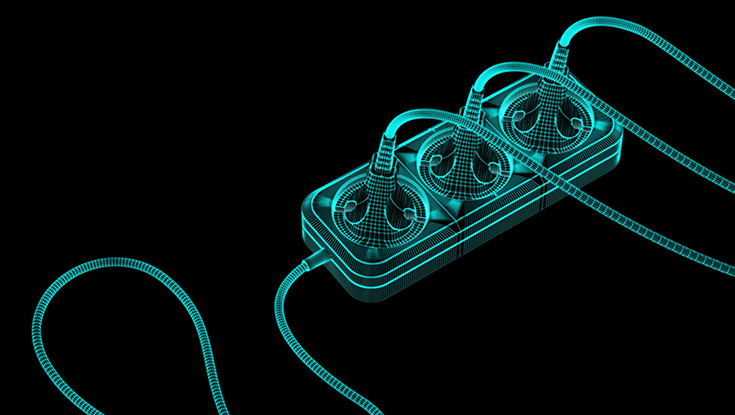Natural hazards: Working for a resilient power grid in Europe
Electricity is the backbone of European society. When a natural disaster hits the power grid, recovery can happen in a matter of hours or it could take months to fully restore electricity supply. As well as hampering emergency response efforts, power cuts can trigger accidents and bring economic activity to a halt.

The resilience of electrical power utilities is essential in the face of natural hazards such as earthquakes, space weather and flooding (Image: Pavel Ignatov/123rf)
The European Commission’s Joint Research Centre (JRC) scientists provide scientific evidence to help EU policymakers as they work to guarantee a resilient power grid with secure access to electricity. It’s most recent study finds that collaboration and harmonisation – whether across borders or policy lines – are key to ensuring the EU's power grid can stand up to natural hazards.
The report 'Power grid recovery after natural hazard impact' analyses the characteristics of different natural hazards, how they influence power grid recovery time and what the most effective mitigation strategies are.
Factors affecting the power grid recovery time in the aftermath of natural disasters include the resilience of electric power utilities and the disruption of other critical infrastructure – either as a direct result of the natural event, or because of the loss of power supply.
The report makes a number of recommendations for building the resilience of the EU power grid, including:
-
Integrating risk assessment and risk management efforts across various policy areas that directly or indirectly affect the electricity infrastructure;
-
A transition of hazard mitigation strategy from 'asset hardening' (strengthening components of the grid such as buildings and equipment, to withstand hazard impacts) to 'resilience building' (designing the grid so that operation can continue when critical infrastructure is damaged);
-
Improving cross-jurisdictional and cross-border emergency management capabilities related to the provision of electricity. Policies should ensure interoperability between neighbouring transmitter and distributor system operators, and between these operators and emergency management organisations; and
-
Space weather forecasting capabilities should be improved to provide transmission system operators with the information they need to prepare for a severe event.
Scientists analysed the performance of the power grid following the impact of real-world natural hazard events.
Earthquakes: These are a particular hazard in the Baltic and Mediterranean countries. They cause damage to heavy equipment and brittle items. Ground failure and soil liquefaction can be devastating to a grid's infrastructure. In most cases it took between one to four days to restore power supply after earthquake impact, although the timescale ranged from a few hours to months.
Space weather events: Until recently, this hazard was little understood in the disaster risk management community (see CRJ 9:4 Why does space weather matter? And CRJ 6:3 How vulnerable are we to space weather?) Space weather is created by solar activity. Through geomagnetically induced currents (GICs), it affects power transmission and generation equipment, with the potential to affect the entire transmission network. Although some early warning is possible, warning lead times are typically very short. When damage is limited to tripping a limited number of protective devices, restoration time is less than 24 hours. However, repairs of damaged equipment may take up to several months.
Space weather, including solar flares, can affect electrical grids - see CRJ 6:3 and 9:4 (image: NASA/SDO)
Floods: Again, these are a common hazard across Europe and are regularly associated with power outages. Erosion owing to the floodwaters and landslides triggered by floods undermines transmission towers’ foundations. Serious, and often explosive damage may occur when electrified equipment comes into contact with water, while moisture and dirt intrusion require time-consuming repairs. However, in contrast to earthquakes, early warning is possible with flooding, enabling electrical utility providers to shut off power in flood zones, therefore minimising damage. In this study, power was back online from 24 hours up to three weeks after the flood.